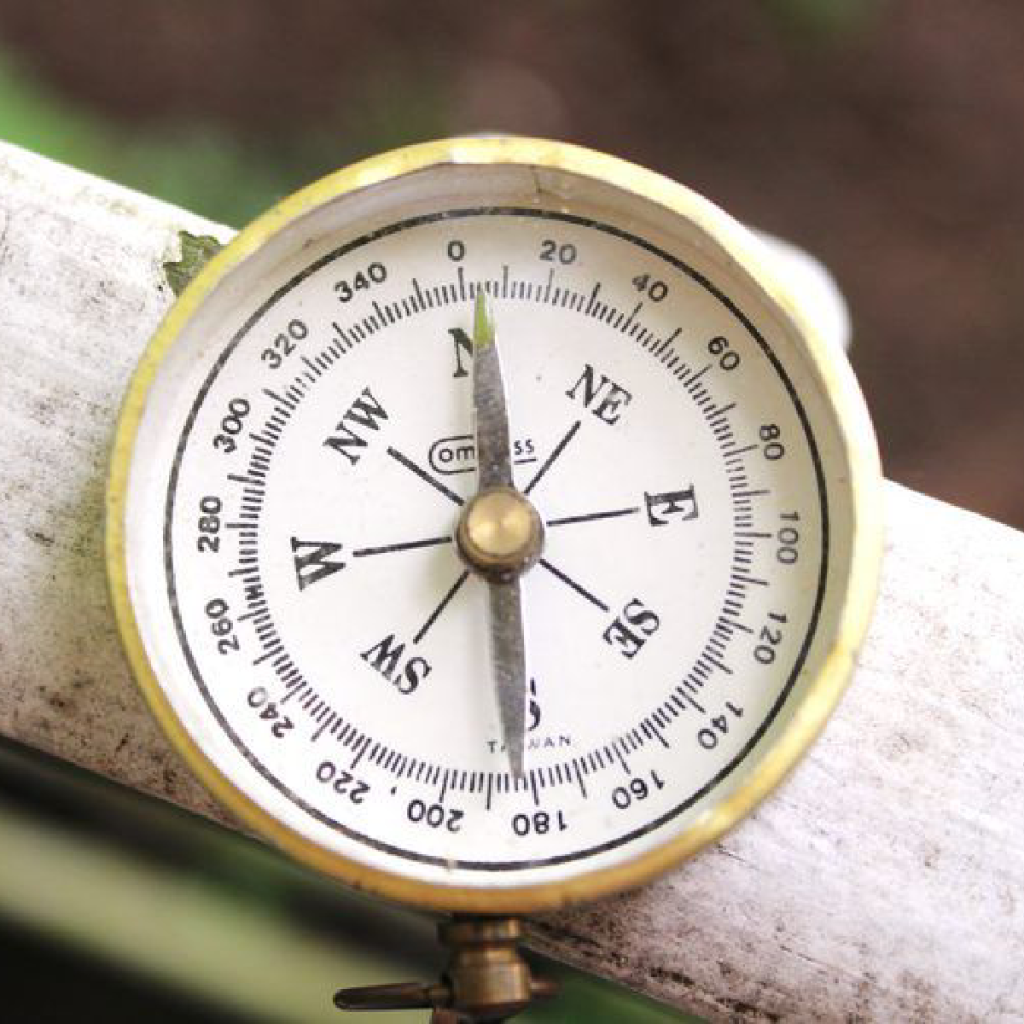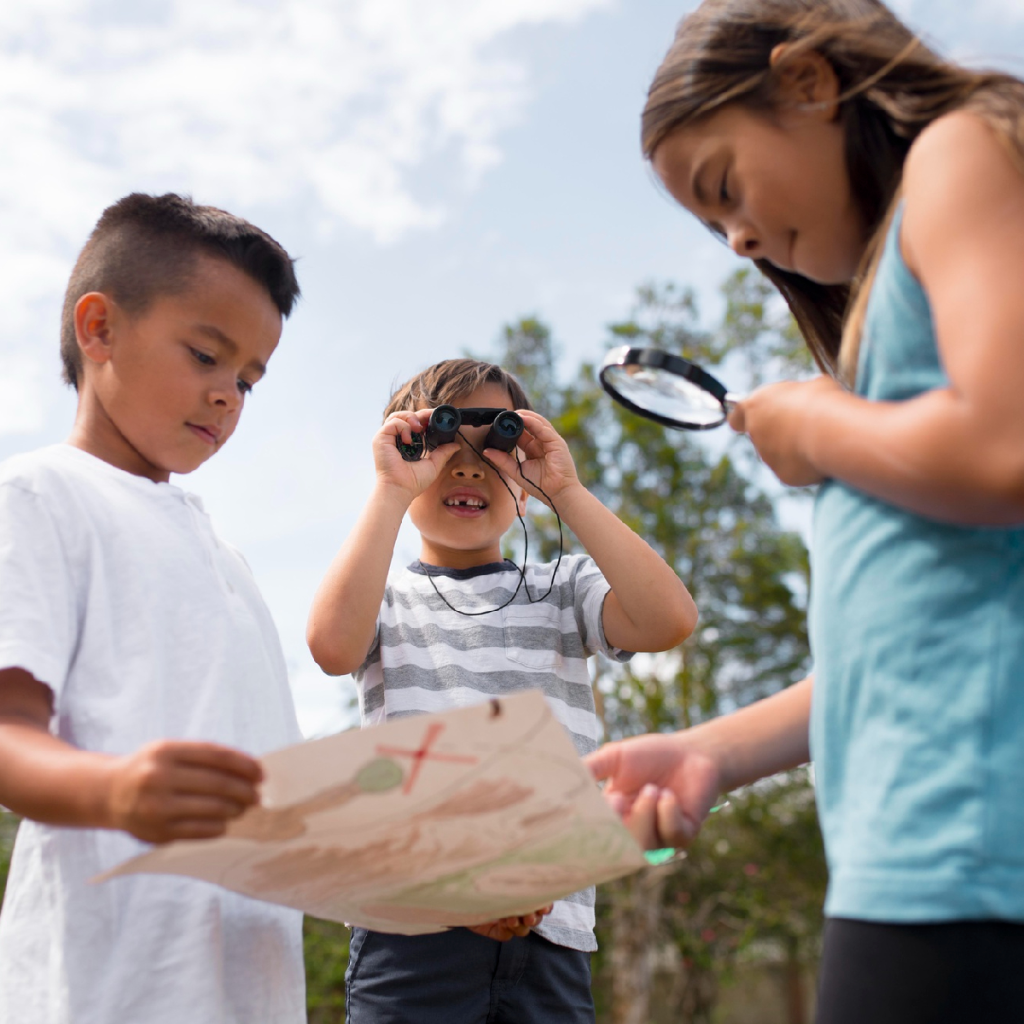Discover effective strategies and activities for teaching navigational skills to 11-12 year old children.
Teaching Navigational Skills to 11-12 Year Old Children
Are you ready to embark on an exciting journey into the world of navigating? Teaching navigational skills to 11-12 year old children can be a thrilling and rewarding experience. In this article, we will explore the importance of navigational skills, delve into the basic concepts of navigation, discuss techniques for teaching navigation, overcome common challenges, and learn how to assess progress in navigational skills.

Understanding the Importance of Navigational Skills
Navigation is a skill that goes beyond simply finding your way from point A to point B. It is a fundamental skill that plays a crucial role in our everyday lives. Whether we are exploring new places, going on adventures, or finding the quickest route to our favorite hangout spot, navigation is essential.
Imagine this: you’re standing at the edge of a dense forest, with tall trees towering above you. The sun is hidden behind the thick canopy, making it difficult to determine which way is north. In this situation, having navigational skills becomes a lifeline. With a map and compass in hand, you can confidently navigate through the wilderness, avoiding potential dangers and finding your way back to safety.
The Role of Navigation in Everyday Life
From using maps and compasses to relying on modern GPS systems, navigation is all around us. It helps us plan our trips, avoid getting lost, and discover new places. Navigational skills empower children to become independent and self-reliant, giving them the confidence to explore the world around them.
Think about a time when you were traveling to a new city. You wanted to visit all the popular tourist attractions, but without navigation, it would have been a daunting task. Thanks to GPS technology, you were able to effortlessly navigate through the unfamiliar streets, ensuring that you didn’t miss out on any of the sights and experiences the city had to offer.
Navigational Skills and Cognitive Development
Did you know that teaching navigational skills can also enhance cognitive development in children? Engaging in activities that require spatial reasoning and problem-solving stimulates their brains and fosters critical thinking skills. By honing their navigational abilities, children strengthen their mental acuity and become better equipped to tackle challenges in other areas of their lives.
Imagine a group of children participating in a treasure hunt. They are given a set of clues that lead them to different locations in a park. In order to find the hidden treasure, they must use their navigational skills to decipher the clues, determine the correct path, and navigate their way through the park. This activity not only provides a fun and exciting adventure for the children but also enhances their cognitive abilities as they engage in critical thinking and problem-solving.
Furthermore, studies have shown that individuals with strong navigational skills have a greater capacity for spatial memory. This means that they are better able to remember and recall information about their surroundings, such as landmarks, routes, and directions. This enhanced spatial memory not only benefits them in navigation but also in other areas of their lives, such as academics and professional endeavors.
Basic Concepts of Navigation
Before diving into the wild world of navigation, it’s crucial to introduce children to some basic concepts that form the foundation of this skill.
Navigation is the art and science of finding your way from one place to another. It involves understanding maps, compasses, directions, and coordinates. By mastering these concepts, children can become skilled navigators, able to explore new places with confidence.
Introduction to Maps and Compasses
Maps are like magical portals that transport us to new destinations. They provide a visual representation of the world around us, allowing us to navigate through unfamiliar territory. Start by teaching children how to read maps, identify landmarks, and understand different symbols on a map.
Maps come in various forms, from paper maps to digital maps on smartphones or GPS devices. Teach children how to interpret the different elements of a map, such as legends, scales, and keys. Show them how to use a compass rose to determine the cardinal directions: north, south, east, and west.
Introduce them to the fascinating world of compasses, teaching them how to read directions and navigate using cardinal points. Explain how a compass works, with its magnetic needle always pointing towards the Earth’s magnetic north. Teach them how to align the compass with the map to find their bearings and plot a course.
Understanding Directions and Coordinates
Teaching children how to understand and give directions is a vital aspect of navigation. Show them how to determine their current location, identify points of interest, and calculate distances between various locations.
Explain the concept of directions, such as left, right, forward, and backward. Teach them how to use landmarks or street signs to navigate in their surroundings. Encourage them to observe their environment and make mental notes of significant landmarks that can help them find their way.
Another important concept in navigation is coordinates. Explain to children how coordinates are used to pinpoint specific places on a map. Teach them about latitude and longitude, the imaginary lines that crisscross the Earth’s surface. Show them how to read coordinates and use them to locate a place accurately.
By understanding directions and coordinates, children can navigate confidently, whether they are exploring a new city or embarking on an outdoor adventure. These skills will not only help them find their way but also foster a sense of independence and curiosity about the world around them.
Techniques for Teaching Navigational Skills
Learning navigation doesn’t have to be dry and boring. By incorporating playful techniques, you can make the process engaging and enjoyable for children.
One technique to make navigation fun and engaging is to organize treasure hunts or scavenger hunts that require children to navigate through a series of clues, leading them to hidden treasures. This activity not only teaches children how to read and follow directions but also sharpens their problem-solving skills as they decipher the clues and navigate their way to the final destination.
In addition to treasure hunts, you can create maps of imaginary worlds and let children explore and navigate their way through these exciting landscapes. By using their imaginations and following the map, children can develop their spatial awareness and learn how to navigate different terrains.
Remember, learning is most effective when it is fun! Incorporating playful elements into navigation lessons not only keeps children engaged but also helps them retain the information better.
Incorporating Technology in Navigation Lessons
We live in a digital era, and technology can be a valuable tool for teaching navigation. Introduce children to navigation apps, GPS devices, or online map tools to enhance their learning experience.
One way to incorporate technology is by using navigation apps that simulate real-world scenarios. These apps allow children to practice navigation skills in a virtual environment, where they can explore different routes, landmarks, and even calculate estimated travel times. By interacting with these apps, children can gain practical experience and develop confidence in their navigational abilities.
Another way to utilize technology is by introducing GPS devices. Children can learn how to use GPS devices to find their way in unfamiliar places. This not only teaches them how to read maps and interpret directions but also instills a sense of independence and self-reliance.
Online map tools can also be a great resource for teaching navigation. Children can learn how to zoom in and out, search for specific locations, and plan routes using these tools. By engaging in interactive activities with online maps, children can develop their navigational skills while also gaining a deeper understanding of geography and spatial relationships.
Incorporating technology into navigation lessons not only makes the learning process more exciting but also prepares children for the digital world they will navigate as they grow older.
Overcoming Common Challenges in Teaching Navigation
Teaching navigation may sometimes come with its own set of challenges. However, with a little patience and creativity, you can overcome these obstacles.
When it comes to teaching navigation, one common challenge that educators may encounter is addressing misconceptions about navigation. Sometimes, children may hold misconceptions or misunderstandings about how navigation works. As a teacher, it is important to empathize with their perspectives and gently correct any misconceptions they may have. One effective strategy is to use real-life examples or practical demonstrations to help them grasp the concepts more effectively. By relating navigation to their everyday experiences, such as finding their way around their neighborhood or using a map to plan a trip, you can help them understand the importance and relevance of navigation in their lives.
Addressing Misconceptions about Navigation
Sometimes, children may hold misconceptions or misunderstandings about navigation. Empathize with their perspectives and gently correct any misconceptions they may have. You can use real-life examples or practical demonstrations to help them grasp the concepts more effectively.
Another challenge that educators may face when teaching navigation is dealing with difficulties in spatial orientation. Spatial orientation refers to the ability to understand and navigate in physical space. Some children may struggle with spatial orientation, finding it challenging to visualize directions or distances. To help these students, it is important to break down complex concepts into smaller, more manageable pieces. By simplifying the information and presenting it in a step-by-step manner, you can make it easier for them to understand and apply the principles of navigation.
Dealing with Difficulties in Spatial Orientation
Some children may struggle with spatial orientation, finding it challenging to visualize directions or distances. Break down complex concepts into smaller, more manageable pieces. Engage them in hands-on activities that involve physical movements and real-life scenarios to help them develop a better sense of spatial awareness.
In addition to breaking down complex concepts, engaging students in hands-on activities can also be an effective way to help them develop a better sense of spatial awareness. By involving them in activities that require physical movements and real-life scenarios, such as creating and following a treasure map or participating in a scavenger hunt, you can provide them with practical experiences that enhance their understanding of navigation. These activities not only make the learning process more enjoyable but also allow students to apply their knowledge in a meaningful and tangible way.
Furthermore, incorporating technology into the teaching of navigation can also help overcome challenges related to spatial orientation. Utilizing digital maps, GPS devices, or navigation apps can provide students with interactive and visual tools to enhance their understanding of navigation. By allowing them to explore and manipulate these digital resources, students can develop a better understanding of how navigation works in a modern context.
Assessing Progress in Navigational Skills
Tracking progress is essential to ensure that children are advancing in their navigational skills.

Setting Achievable Goals for Navigation Skills
Set specific goals for children, such as improving their map reading abilities, mastering cardinal directions, or becoming proficient in using a compass. Break these goals down into smaller milestones, allowing children to experience a sense of achievement along their navigational journey.
Methods for Evaluating Navigational Competence
Utilize various methods to assess children’s navigational competence. Evaluate their proficiency through practical tasks, such as navigating a predetermined route or creating a comprehensive map. Encourage children to reflect on their progress and offer constructive feedback to help them continue developing their skills.
Teaching navigational skills to 11-12 year old children can be an exciting adventure filled with discovery and growth. By understanding the importance of navigation, introducing basic concepts, utilizing playful teaching techniques, overcoming challenges, and assessing progress, you can guide children on a path towards becoming confident navigators of the world around them. So grab a map, don your adventurous spirit, and let the navigation lessons begin!



